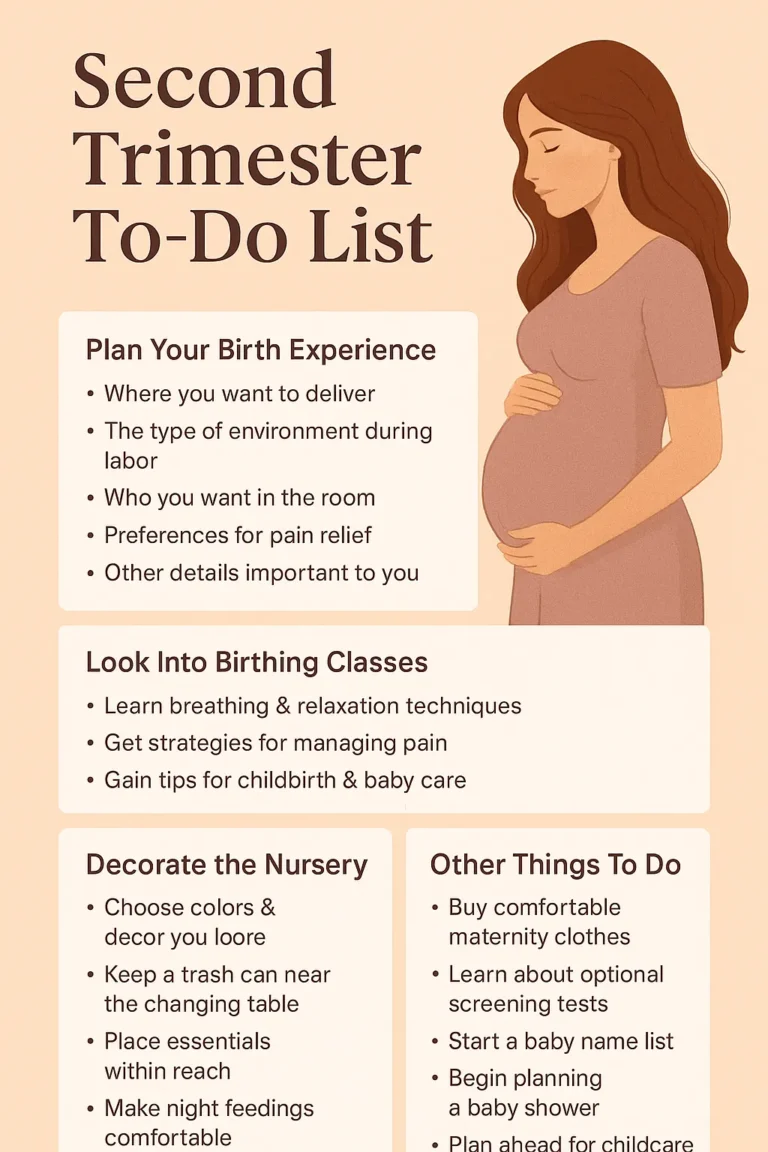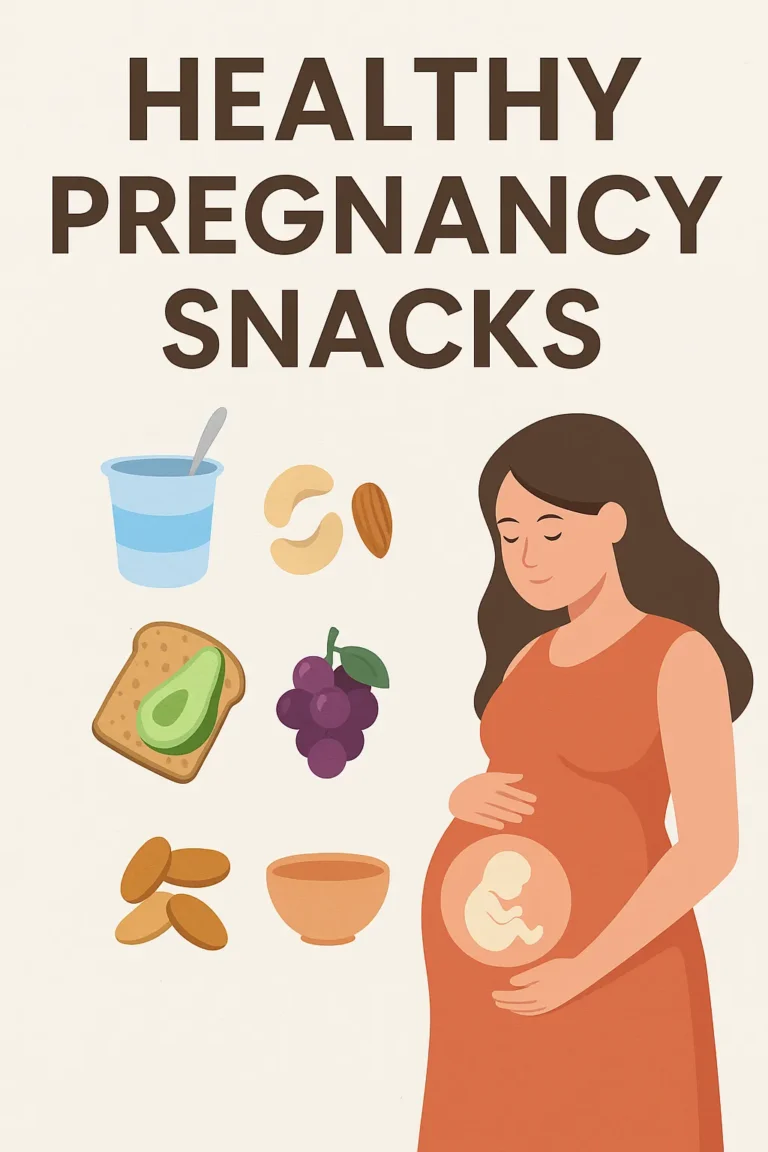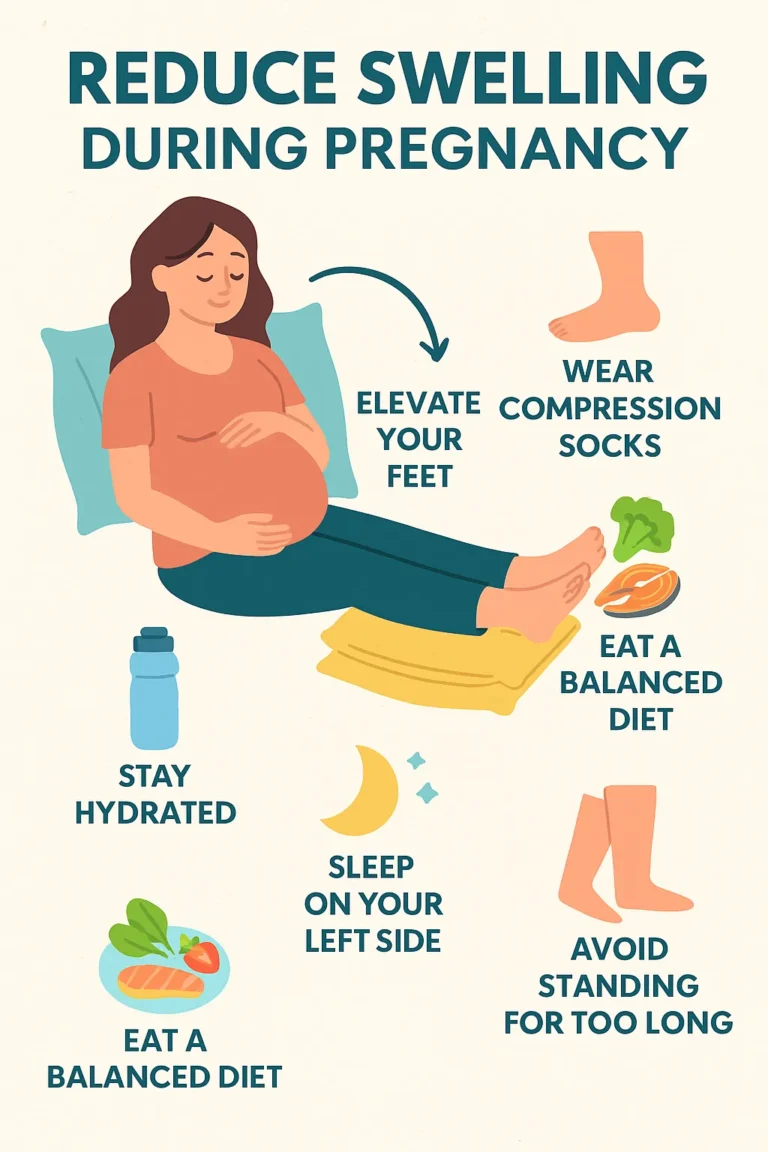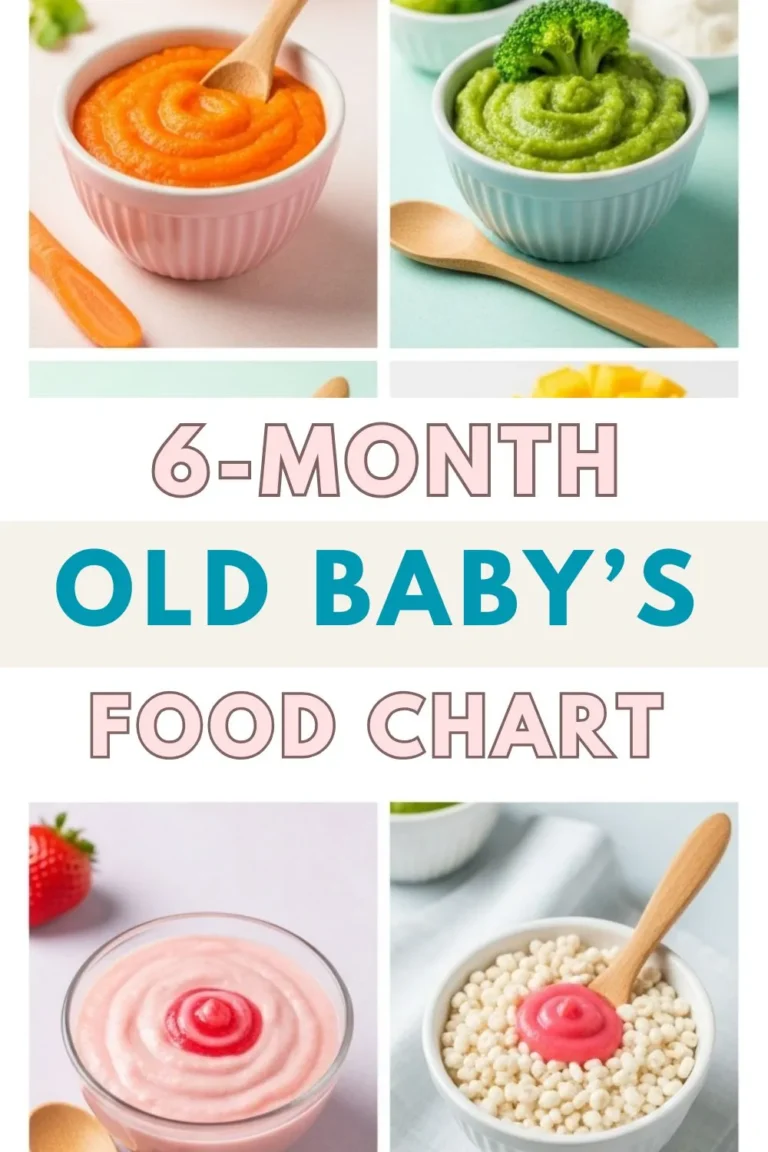The Best Pregnancy Safe First Trimester Workout Plan + Essentials Every New Mom Should Know
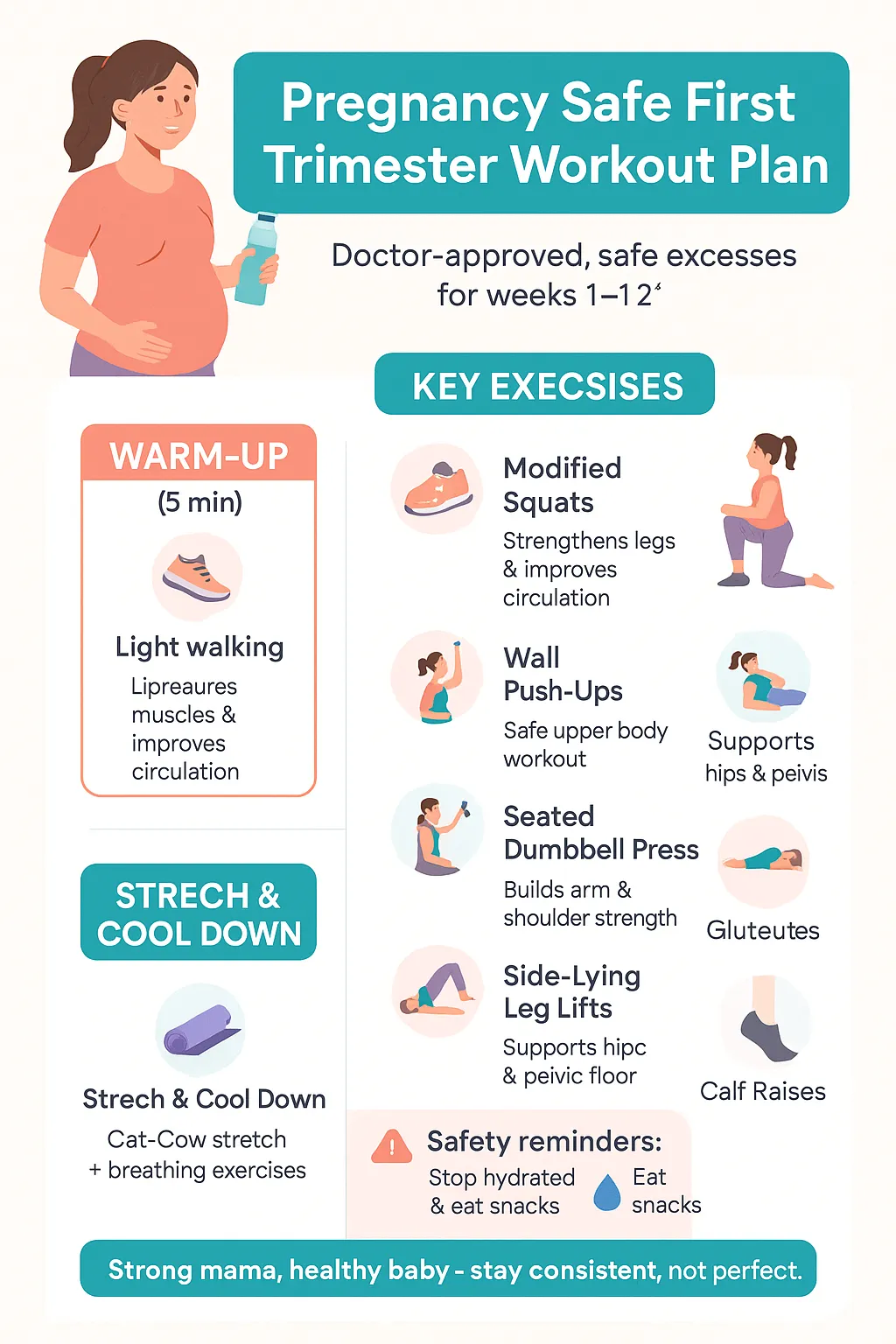
The first trimester can feel like a mix of excitement and overwhelm. Your body is changing, energy levels may shift, and you’re probably wondering what’s safe when it comes to exercise, vitamins, and daily routines.
I remember when I went through my first trimester, the hardest part was figuring out what to keep, what to avoid, and how to stay strong without pushing too hard.
That’s why this guide brings everything together in one place. From safe workout plans and strength exercises to the best prenatal vitamins and first trimester essentials, you’ll find clear, research-based ideas here.
Read More: 50 Weird Early Signs Of Pregnancy
Think of it as a simple roadmap to help you move through early pregnancy with confidence.
Pregnancy Safe First Trimester Workout Plan
During the first trimester, your body begins producing higher levels of progesterone, estrogen, and human chorionic gonadotropin (hCG). These hormones support the pregnancy but also cause fatigue, nausea, and changes in blood circulation.
That’s why exercise needs to be gentle, safe, and focused on maintaining overall health rather than pushing for peak performance.
Most obstetricians and gynecologists agree that low to moderate intensity workouts are safe for women with normal, low-risk pregnancies. The American College of Obstetricians and Gynecologists (ACOG) recommends about 150 minutes of moderate exercise per week. In simple words, that could be 20–30 minutes of activity, five days a week.
Key goals in the first trimester workouts are:
- Improving circulation to reduce the risk of blood clots.
- Strengthening core and pelvic floor muscles, which helps later in pregnancy and delivery.
- Supporting posture as hormonal changes loosen ligaments and joints.
- Managing weight gain in a healthy range.
It’s important to avoid exercises that involve lying flat on your back for long periods (as this may affect blood flow to the uterus) or high-impact sports that risk abdominal trauma.
Hydration and rest are equally important since early pregnancy increases metabolic demand.
Pregnancy Workout Challenge Day 3: Safe & Effective Routine
By the third day of a structured workout challenge in the first trimester, the goal isn’t intensity—it’s consistency. Your cardiovascular system is adapting to increased blood volume, and your joints are becoming more flexible due to relaxin, a pregnancy hormone that loosens ligaments. This makes it essential to choose movements that strengthen muscles without straining vulnerable joints.
Here’s a doctor-approved Day 3 routine you can follow (always with clearance from your obstetrician):
- Warm-Up (5 minutes)
- Light marching in place or gentle walking.
- Purpose: increases heart rate gradually, prepares muscles, and prevents dizziness caused by sudden movement in early pregnancy.
- Bodyweight Squats (2 sets of 10–12 reps)
- Strengthens gluteal and quadriceps muscles, supports pelvic stability, and helps circulation in the lower body.
- Tip: keep knees behind toes and avoid deep squats to reduce pressure on pelvic floor.
- Wall Push-Ups (2 sets of 8–10 reps)
- Works chest, shoulders, and arms safely without overloading abdominal pressure.
- Adjust distance from the wall to control intensity.
- Seated Bicep Curls with Light Dumbbells (2 sets of 12 reps)
- Builds upper body endurance, useful later when carrying your growing baby bump and eventually holding your newborn.
- Cat-Cow Stretch (30–45 seconds)
- A gentle yoga-inspired spinal movement that eases back stiffness.
- Helps maintain spinal mobility and reduces early backache linked with posture changes.
- Pelvic Floor Contractions (Kegels, 2 sets of 10 reps)
- Essential for preventing urinary incontinence and supporting the uterus.
- Inhale deeply, exhale as you gently contract pelvic floor muscles, then release.
- Cool Down & Breathing (3–5 minutes)
- Gentle neck rolls, shoulder shrugs, and slow breathing.
- Encourages relaxation, reduces cortisol (stress hormone), and restores calm.
First Trimester Workout: 8 Best Strength Exercises
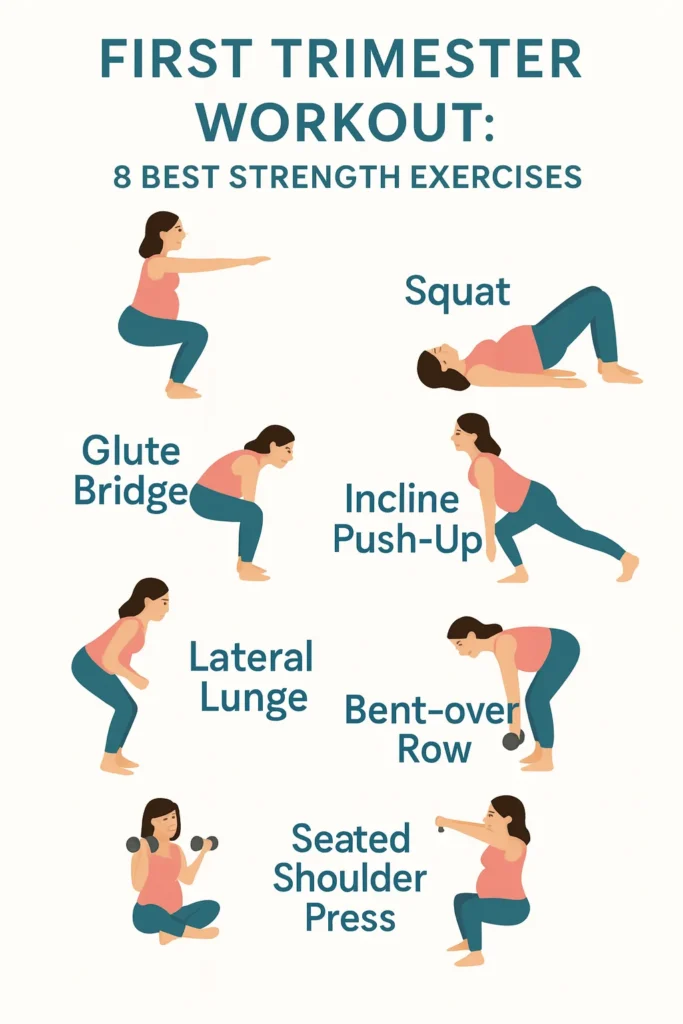
1. Modified Squats
Squats are excellent for strengthening your glutes, thighs, and hamstrings. In pregnancy, they also help improve blood circulation in the lower body, which lowers the risk of swelling and varicose veins.
To perform them safely, stand with your feet shoulder-width apart, bend your knees slightly, and lower yourself as if sitting in a chair. Avoid going too deep, and keep your knees behind your toes. This way you protect your pelvic floor and joints.
2. Seated Overhead Dumbbell Press
This exercise strengthens your shoulders and arms, muscles that will carry extra load as your pregnancy progresses. Always use light dumbbells (1–3 kg is usually enough).
Sit upright in a chair with back support, lift the dumbbells to shoulder level, and gently press them overhead before lowering slowly. Sitting reduces the risk of imbalance, which is important since pregnancy hormones like relaxin make joints looser.
3. Wall Sit
A wall sit is great for building lower body endurance without stressing the abdomen. Stand with your back against a wall, slide down until your knees are at about 90 degrees, and hold the position for 20–30 seconds.
Make sure your knees don’t push forward past your toes. This exercise strengthens your thighs and core while also supporting better posture, which helps reduce early backaches.
4. Step-Ups on a Low Platform
Step-ups train your legs and improve balance. Use a low, stable platform or the bottom step of a staircase. Step up with one foot, bring the other up, then step down slowly. Repeat with the opposite leg.
Hold onto a wall or railing if you feel unsteady. This exercise also works your cardiovascular system gently, which is helpful since your heart is already pumping more blood in early pregnancy.
5. Bent-Over Rows (with Dumbbells or Resistance Band)
This exercise strengthens your upper back and shoulders, helping to counter the rounded posture many women develop as their belly grows. Stand with knees slightly bent, hinge forward at the hips (not the waist), and hold light dumbbells or a resistance band.
Pull your arms toward your waist, squeezing the shoulder blades together, then release slowly. Keep movements smooth and avoid heavy weights.
6. Side-Lying Leg Lifts
Lie on your side with knees straight and your head supported by your arm or a pillow. Slowly lift the top leg upward, then bring it back down with control. This strengthens the hip abductors, which support pelvic stability and reduce hip discomfort later in pregnancy.
Side-lying positions are safe in the first trimester and also encourage good circulation.
7. Glute Bridges (Modified)
Lie on your back with knees bent and feet flat on the ground, hip-width apart. Slowly lift your hips upward until your body forms a straight line from shoulders to knees. Hold for 2–3 seconds, then lower down.
This strengthens your glutes and lower back while also engaging the core. Avoid holding the position too long, as lying flat for extended periods can reduce blood flow to the uterus.
8. Standing Calf Raises
Stand upright with feet hip-width apart, and slowly rise onto your toes, then lower back down. Repeat 10–12 times. This exercise strengthens calf muscles and improves circulation, which is crucial for preventing leg cramps and swelling—a common complaint in pregnancy due to increased blood volume and fluid retention. For balance, hold onto a chair or wall.
Ultimate First Trimester Survival Guide for New Moms
The first trimester (weeks 1–12) is often the most overwhelming part of pregnancy. Your body is adjusting to rapid hormonal shifts, your emotions may swing, and the tiniest embryo is going through the most critical development stages—forming the brain, spinal cord, heart, and other major organs.
Let’s break down everything you need to know to survive and thrive during this stage.
1. Understanding Your Body’s Changes
- Hormones at work: Estrogen and progesterone rise quickly, causing fatigue, nausea, and breast tenderness. Human chorionic gonadotropin (hCG) peaks around weeks 8–11, which is why morning sickness is usually strongest then.
- Blood circulation: Your blood volume is increasing, and your heart rate speeds up slightly to deliver more oxygen. This explains dizziness or lightheadedness at times.
- Digestive system: Progesterone relaxes smooth muscles, slowing digestion. That’s why constipation, bloating, and heartburn become common.
Knowing these changes helps you understand that your symptoms are not unusual—they’re part of the body’s natural adjustments.
2. Nutrition and Prenatal Vitamins
- Balanced diet: Focus on foods rich in protein (eggs, lean meat, lentils), calcium (dairy, leafy greens), and omega-3 fatty acids (salmon, chia seeds).
- Folic acid: Essential in the first trimester to prevent neural tube defects. Most doctors recommend 400–800 mcg daily.
- Iron: Helps prevent anemia since blood volume is expanding. Pair iron-rich foods (like spinach, red meat, beans) with vitamin C sources (orange, bell pepper) for better absorption.
- Prenatal vitamins: Not all are equal. Look for those that contain folate (not just folic acid), vitamin D, B12, and iodine. Later, I’ll share a prenatal vitamin checklist for easy selection.
💡 Tip: Eat small, frequent meals to fight nausea, and avoid raw fish, unpasteurized dairy, and undercooked meat to reduce infection risks.
3. Managing Common Symptoms
- Morning sickness: Ginger tea, vitamin B6 supplements, and eating bland snacks like crackers before getting out of bed can help. If vomiting is severe and persistent, consult your doctor about hyperemesis gravidarum, a condition needing medical care.
- Fatigue: Listen to your body. Short naps, hydration, and iron-rich foods are your best tools. Limit caffeine intake to <200 mg per day (around one small coffee).
- Constipation: Increase dietary fiber (fruits, vegetables, whole grains) and drink at least 2 liters of water daily. Gentle walking also helps bowel movement.
- Breast tenderness: Wear a supportive bra, preferably cotton-based, to reduce discomfort.
4. Mental and Emotional Well-being
Pregnancy can feel isolating, especially in the first trimester when most women haven’t announced it yet. Hormonal fluctuations can increase anxiety or mood swings.
- Self-care: Practice relaxation techniques like deep breathing or prenatal yoga.
- Support system: Talk to your partner, a trusted friend, or join online communities of expecting mothers.
- When to seek help: If you notice persistent sadness, loss of interest, or excessive worry, speak with your healthcare provider—early intervention prevents prenatal depression.
5. Lifestyle Adjustments
- Exercise: As discussed earlier, stick to low- to moderate-intensity workouts. Swimming, walking, and prenatal yoga are safe choices.
- Sleep: Aim for 7–9 hours. Side-sleeping (preferably on the left side) is best for circulation. In early weeks, any comfortable position is fine, but developing this habit early helps later.
- Hydration: Increased blood volume means you need more fluids. A good target is 8–10 glasses of water daily.
- Avoid risks: Stop smoking, avoid alcohol completely, and limit exposure to second-hand smoke and toxic chemicals (like cleaning solvents or paint fumes).
6. Medical Check-Ups and Screenings
Your first prenatal visit usually happens around 6–8 weeks. This includes:
- Ultrasound: To confirm pregnancy location (inside the uterus) and heartbeat.
- Blood tests: Check for blood type, Rh factor, iron levels, thyroid function, and infections like hepatitis B, HIV, and syphilis.
- Genetic screening (optional): Some women choose early screening for chromosomal conditions.
- Urine tests: To check for protein (kidney health) and infections.
Vitamins in the First Trimester
Vitamins and minerals are the foundation of a healthy pregnancy. In the first trimester, the most important one is folic acid (400–800 mcg daily), which lowers the risk of neural tube defects in the baby’s brain and spine.
Along with this, your body also needs iron to prevent anemia, vitamin D for bone development, and iodine for brain growth.
A prenatal vitamin helps fill these gaps when diet alone isn’t enough. The key is to choose a supplement designed specifically for pregnancy, and always check with your doctor before starting or changing one.
First Trimester Pregnancy Essentials
The first trimester can feel unpredictable, but having the right essentials can make the journey much smoother. These aren’t luxury items—they’re practical tools that support your health, reduce discomfort, and help you feel more in control of the changes happening in your body.
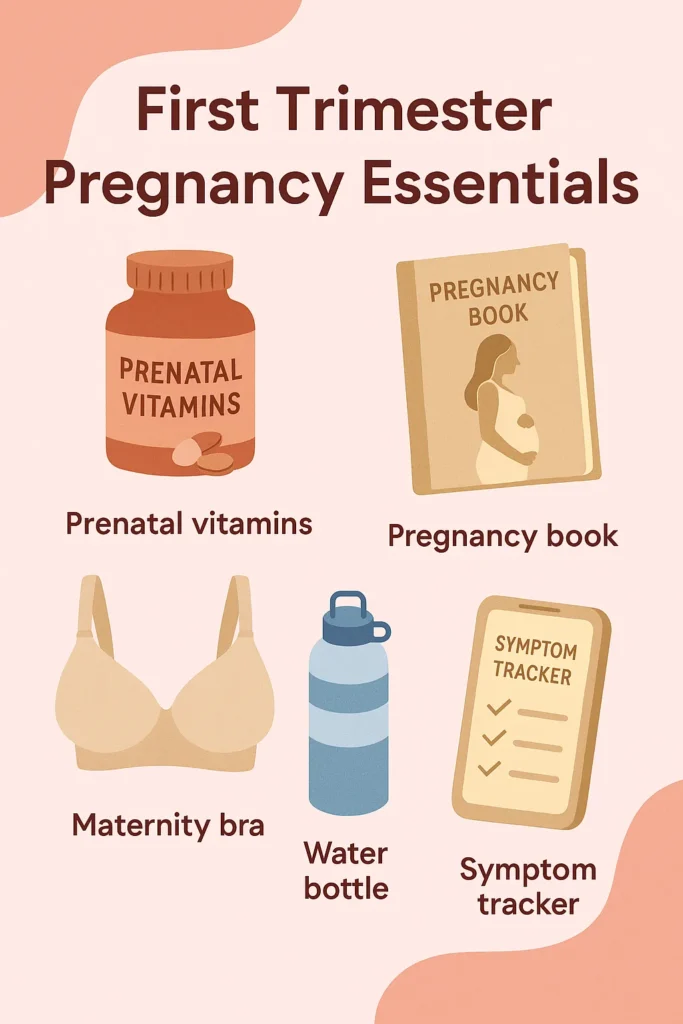
1. Prenatal Vitamins
Even with the best diet, your body needs extra nutrients during pregnancy. A good prenatal vitamin ensures you’re getting enough folate, iron, vitamin D, B12, and iodine.
Folate supports brain and spinal cord development, iron prevents anemia, and vitamin D strengthens bones and immunity. Start them early, ideally before conception, but continuing through the first trimester is crucial.
2. Comfortable Bras
Breast tenderness is one of the earliest pregnancy symptoms, caused by rising estrogen and progesterone.
A soft, supportive bra (preferably cotton or without underwire) reduces pain and prevents unnecessary strain on ligaments. Some women even switch to maternity bras this early for better comfort.
3. Hydration Bottle
Dehydration worsens fatigue, constipation, and headaches. Keeping a large water bottle nearby helps you track intake—aim for at least 8–10 glasses daily. Adding lemon or cucumber slices can ease nausea and encourage hydration.
4. Healthy Snacks on Hand
Morning sickness often peaks in the first trimester. Keeping small snacks like whole-grain crackers, bananas, or nuts prevents an empty stomach, which triggers nausea.
Protein-rich options (like boiled eggs or Greek yogurt) help stabilize blood sugar and reduce dizziness.
5. Maternity Pillow (Early Use)
Though many women don’t show much in the first trimester, discomfort in sleep can already begin due to hormonal changes and breast tenderness. A small maternity or wedge pillow provides gentle support and encourages side-sleeping, which later becomes essential for circulation.
6. Ginger and Vitamin B6 Support
For nausea relief, ginger tea, ginger chews, or B6 supplements are commonly recommended by doctors. Research shows vitamin B6 (10–25 mg, 3 times daily) can reduce pregnancy-related nausea. Always confirm dosage with your doctor before starting.
7. Comfortable Shoes
Hormones like relaxin loosen your ligaments, and even in the first trimester, you may feel changes in balance or mild swelling in feet. Supportive, cushioned shoes lower the risk of ankle strain and keep you more comfortable during walks or light exercise.
8. Journal or Pregnancy App
Tracking your symptoms, moods, and appointments makes you more aware of your health. A journal can also help you note down questions for your doctor visits. Digital apps can remind you of safe food choices, hydration, and exercise routines.
9. Sunscreen (Safe Formulation)
Pregnancy hormones increase melanin production, making you prone to “pregnancy mask” (melasma). Use a broad-spectrum, mineral-based sunscreen with zinc oxide or titanium dioxide to protect skin safely. Avoid chemical sunscreens with oxybenzone.
10. Emotional Support
An often-overlooked essential is a strong support system. Whether it’s your partner, a close friend, or an online mom community, having people to share your experience with reduces stress and helps mental well-being. Emotional stability is just as vital as physical care in these early weeks.

